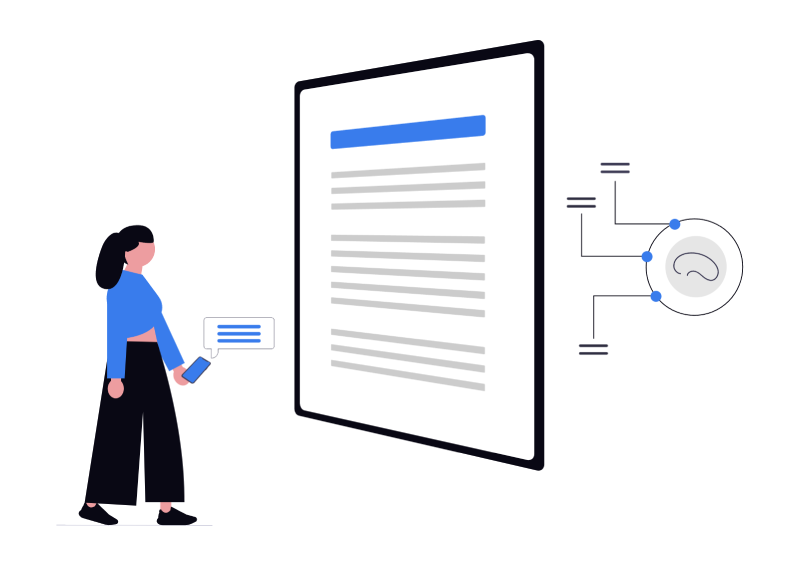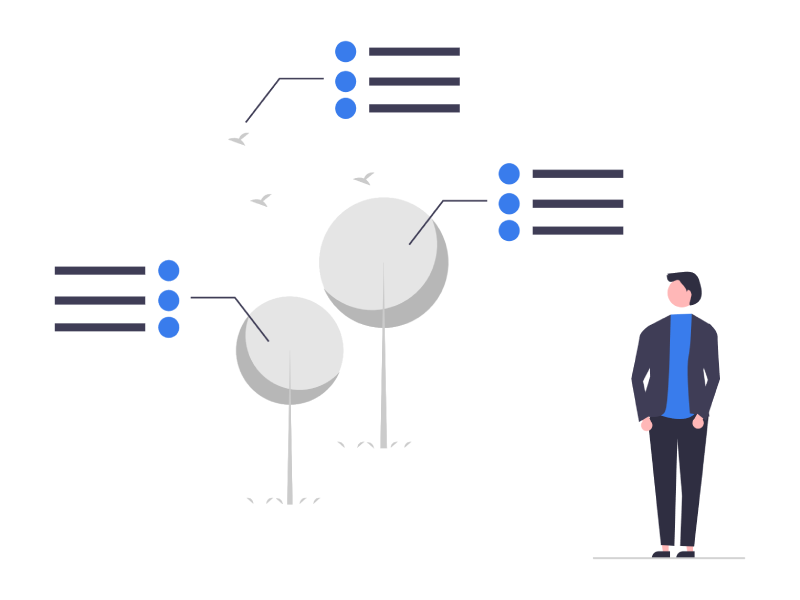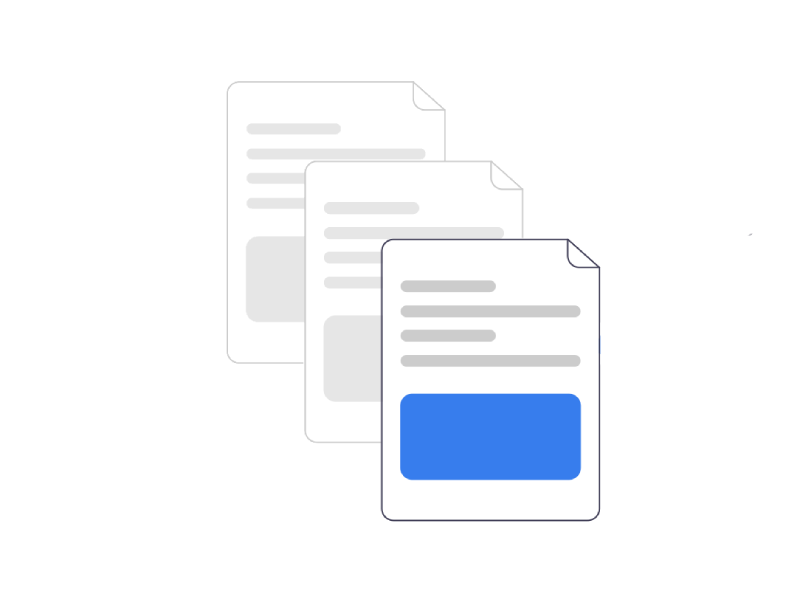In 2025, Ahrefs remains a cornerstone of SEO analysis. But as AI-generated search reshapes the landscape, understanding how Ahrefs measures links and domains isn’t just technical hygiene — it’s strategic survival. With more SEOs optimizing for both traditional SERPs and AI responses, backlink data informs everything from outreach targeting to visibility modeling in Generative Link Presence.
So how exactly does Ahrefs count links and domains? What makes a referring domain count? And how can you trust the metrics you’re using to justify strategy and report ROI?
Let’s dive deep.
Why This Matters in 2025
Backlinks remain one of Google’s strongest ranking signals — but in a GEO-first world, they do more than impact position. They shape whether your brand appears in AI-generated answers. This is known as your Answer Equity — the likelihood your brand will be referenced by large language models (LLMs) across generative surfaces like ChatGPT, Gemini, and Perplexity.
And much of that equity is derived from visibility in authoritative domains — the kind Ahrefs helps you track.
“Backlink data is only as good as its source. If you don’t know how a tool counts, you don’t know what it means,” — Kevin Indig, growth advisor and ex-SEO Director at Shopify.
How Ahrefs Defines and Counts Links
Ahrefs defines a backlink as any crawlable HTML <a href=””> link from one site to another. It does not count:
- JavaScript-triggered links,
- iframe or image-based links,
- Or links in blocked sections (e.g., behind login walls or disallowed by robots.txt).
Link Types Ahrefs Tracks:
- Dofollow and nofollow links (both shown, clearly labeled)
- Contextual editorial links
- Links in footers, headers, and sidebars (though they’re deprioritized)
Referring Domains vs. Total Backlinks
This is where many SEOs get tripped up.
Ahrefs distinguishes between:
- Backlinks = total number of individual links (even if they’re from the same domain)
- Referring Domains = number of unique domains linking to you
So if example.com links to you 50 times, that’s:
- 50 backlinks,
- But only 1 referring domain.
This matters because domain diversity is far more influential than sheer volume — especially for building durable authority and visibility in GEO-native environments.
Pro tip: Use this guide to understand how to diversify your link profile efficiently.
The AhrefsBot & Index Scale
Ahrefs runs its own crawler — AhrefsBot — which crawls more than 8 billion pages per day as of 2025. It:
- Focuses on HTML-rendered content (not full JS like Googlebot)
- Prioritizes freshness and authority
- Regularly prunes expired, noindexed, or inaccessible links
While Ahrefs doesn’t assign “link juice” like Google, it mirrors the logic by:
- Scoring links by page-level and domain-level authority (UR and DR)
- Prioritizing links from stable, high-quality domains
Ahrefs also excludes spammy, expired, or “low-signal” links from reporting — improving trust in its backlink data.
What Is Domain Rating (DR)?
Domain Rating (DR) is a 0–100 metric that measures the overall backlink strength of a domain.
Key characteristics:
- Based on quantity and quality of referring domains
- Uses a logarithmic scale (going from DR 60 to 70 is 10x harder than 30 to 40)
- Penalizes domains that link out excessively
- Devalues spammy or manipulative linking patterns
“DR is a directional indicator. I never treat it as absolute — but it’s incredibly helpful when filtering link prospects,” — Nathan Gotch, GotchSEO.
Related: Crowdo’s Foundation Package is optimized for building DR-relevant links.
What About URL Rating (UR)?
UR applies to individual pages rather than whole domains. It’s a snapshot of that URL’s link profile — great for:
- Blog posts
- Product landing pages
- Linkable assets (e.g. statistics or research)
UR is strongly influenced by:
- Number of internal and external backlinks
- Referring domain authority
- Crawled freshness
In general:
- DR is used to evaluate a site
- UR is used to evaluate a page
Case Study: Ahrefs’ SEO Statistics Page
Ahrefs’ own SEO Statistics page has become one of the most-linked SEO pages online. Why?
- Timely topic with evergreen search demand
- Structured layout optimized for citations
- Promoted via outreach (515 emails = 36 links from 32 domains)
Result?
- Over 1,700 referring domains
- Inclusion in top AI summaries, including Gemini and Perplexity
Lesson for SEOs: One piece of content, well-distributed, can elevate your Generative Link Presence.
Common Misunderstandings
| Myth | Reality |
| 10K backlinks = strong domain | Not if they come from 20 domains |
| DR is like PageRank | DR is based on a proprietary Ahrefs formula, not Google signals |
| Nofollow links don’t count | They do — especially for visibility tracking and brand mentions |
| All links are equal | Editorial + contextual + domain-relevant links carry far more value |
Tools You Should Be Using
Ahrefs has introduced powerful backlink features in 2024–2025:
| Tool | Purpose |
| Best Links Report | See your most influential referring domains |
| Backlink Calendar | Track backlink acquisition velocity over time |
| Lost Links Report | Detect dropped or decayed domains |
| DR/UR Filters | Segment by authority to identify valuable relationships |
Use these in tandem to surface weak spots in your backlink strategy.
You can learn more in this guide to custom SEO strategies.
Expert Commentary
“A DR 20 site with great UX and intent matching can outrank DR 80 sites. Links matter — but context matters more.”
— Marie Haynes, SEO Consultant
“Ahrefs is consistent. But don’t get DR-blinded. Use it to shortlist, not finalize.”
— Craig Campbell, SEO YouTuber
Action Plan: What SEOs Should Do Now
1. Break Down Link Reports
Don’t just tell clients “You got 10K links.” Show:
- How many are from new domains
- Which ones are still live
- Which ones boosted UR/DR
2. Focus on Domain Diversity
A DR 60 site with 300 domains is stronger than a DR 70 with 20.
3. Align With GEO Strategy
Use anchor text like “What is [brand]?” or “Best SEO tools in 2025” to feed AI surfaces.
This supports prompt-aware visibility and Answer Equity.
4. Monitor With Ahrefs + Generative Tools
Track mentions in:
- Perplexity (check citations)
- ChatGPT (Web browsing model)
- Glasp or Similarweb (for citation loops)
5. Combine With Outreach
Launch structured campaigns using high-authority link placements.
Ahrefs + GEO = The New Normal
Traditional link building still works — but it’s no longer enough.
In 2025, visibility means being seen and cited.
Ahrefs helps you monitor that foundation — but SEO pros must now think about how links feed into LLM training loops, how structured data supports inclusion, and how referring domain diversity maps to real brand visibility.
Want to test this?
Search your brand in Perplexity.
If you’re not there — start fixing it.
Final Checklist
- Track referring domains, not just backlinks
- Correlate DR/UR with actual traffic in GSC
- Identify link velocity drops via Backlink Calendar
- Build links on diverse surfaces (forums, blogs, citations)
- Use Ahrefs to model both SEO and GEO visibility







